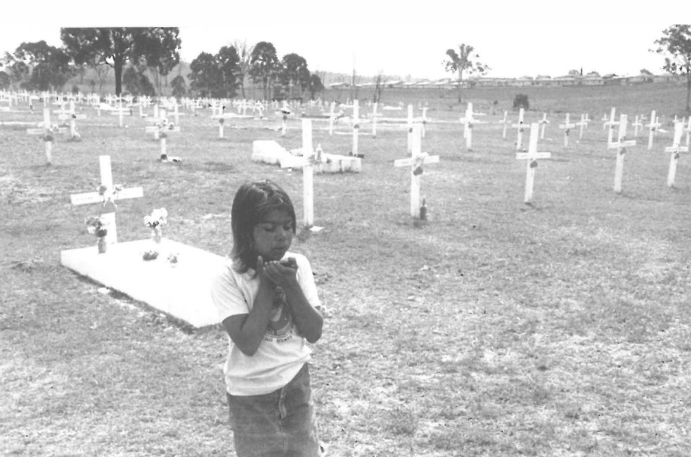
Les Murray when asked what creativity is, says that it is the wound you receive in childhood which never heals. Dennis O'Rourke, Sydney Morning Herald Good Weekend, 9 December 2000, page 53.
This issue of Artlink, devoted to the theme of art and the child, explores the position of children in recent Australian art, as well as the crucial role of art in childhood development. Essays have been commissioned from experts in a number of fields, from visual arts history and criticism, to museology, film, education and psychology.
Children have enjoyed a ubiquitous presence in the history of western art, as chubby cherubs in the religious paintings of the Italian Renaissance, sentimental waifs in Victorian narrative painting and as decorative accoutrements in pre-Modernist European painting.
Yet during the 20th century, the popularity of children as motif and/or subject has diminished. In contrast, children feature disproportionately often in magazine and television advertising, cuteness and vulnerability as persuasive selling tools in the modern media as they were before the advent of photography in the art of previous centuries. As this issue of Artlink reveals, the strongest contemporary Australian art in which subjects of children and childhood remain central is in photo-based and installation practice. Since Charles Blackman's Schoolgirls series half a century ago, the child has been all but banished from the repertoire of Australian painters.
The lost child was a favourite theme of this country's en plein air painters of the late 19th century, symbolising both the idyllic and potentially dangerous quality of the Australian bush. Louise Hearman, one of very few contemporary Australian painters for whom children are recurrent subjects, offers a less innocent viewpoint, her dark, theatrical vignettes conjuring the co-existence of beauty and menace in romanticised visions of childhood.
The issue begins with Robert McFarlane's commentary on the work of Australian photographers for whom the child is a recurrent theme. McFarlane himself is one of Australia's leading photographers: his photograph of Melissa Fisher offers a poignant political twist on the old theme of the innocent child alone in the bush. He took this photograph in 1988 - ironically, the year white Australia celebrated the bicentennial of colonisation. Instead of the vulnerable Anglo child in the bushy scrub found in paintings a hundred years earlier, we see the composed Aboriginal child visiting the cemetery, in a desolate landscape where trees have been replaced with the crucifixes that mark the resting places of her displaced elders.
Artist/writer Brook Andrew's savvy commentary on white prejudices and perceptions of Aboriginal Australia is choreographed in the context of the black child's presence in recent Aboriginal art. Film-maker Phillip Crawford reports on the impact of his film project on the life of the Aboriginal youths with whom he collaborated. Beryl McKenzie and Jennifer Phipps consider the evolving role of child art in Australian art since Modernism, while contemporary curator Russell Storer examines the theme of playfulness in current Australian photo-based and installation practice. K.P. Hall makes a comparative analysis of two recent exhibitions - one in New York and one currently touring Australia - of recent photography that takes the child as its subject.
The other central concern of this issue of Artlink is art presented for and created by children. Elizabeth Ann McGregor and Michael Beckmann write of their experiences working with children in museum settings. Alan Snyder and Lesley Rosenberg discuss children's art in the context of psychological/physical health, while educator Julie Orchard reports on the current crisis in primary school art teaching. As these writers reveal, children use art to interpret and express opinions and feelings about the world that in some cases cannot be made verbally.
Collectively the essays here reveal that, while the child is no longer a ubiquitous subject, child art and childhood themes are assuming an increasingly important position in Australian art.












